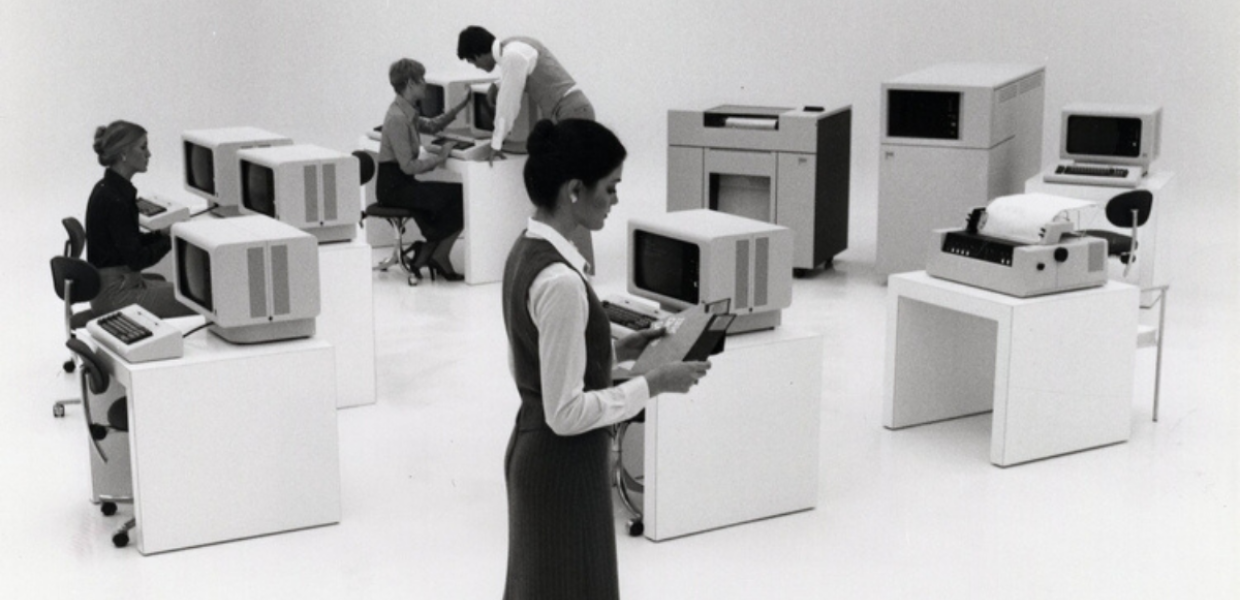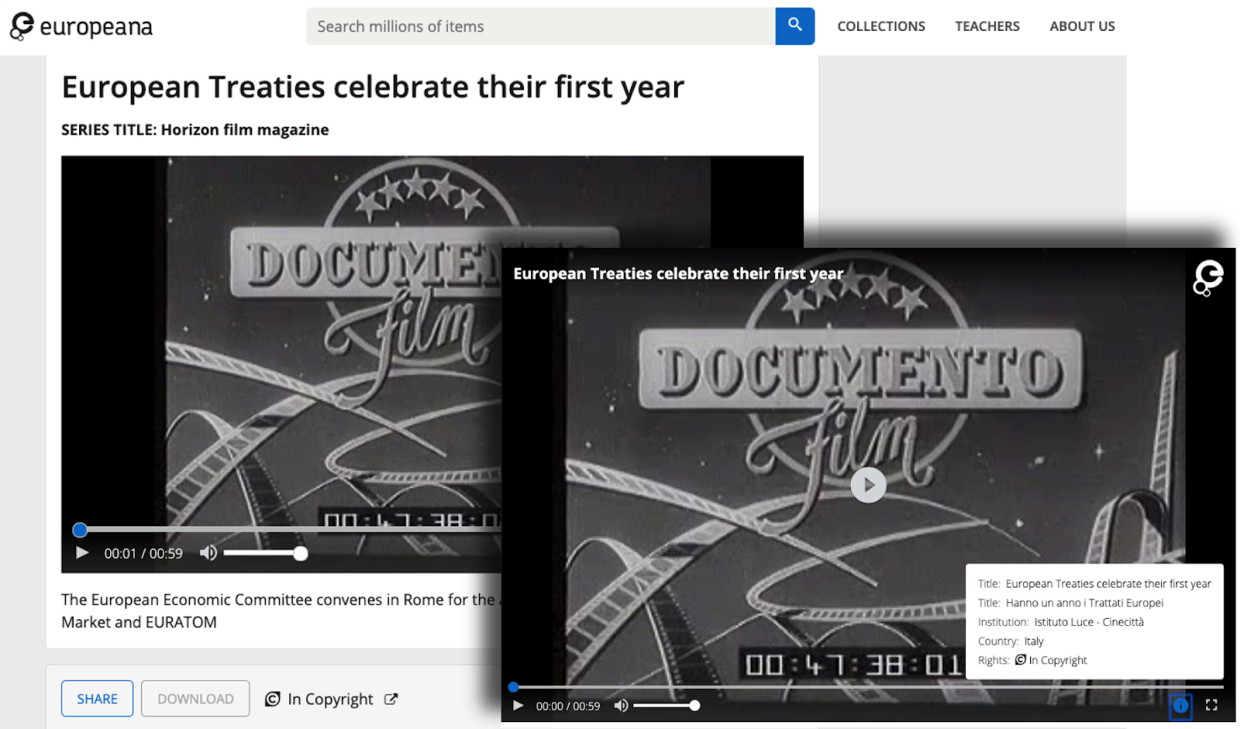Interoperable, too?
When we started the Europeana Media project, we wanted to build on strong, existing, modern technologies. One of those was the International Image Interoperability Framework, or IIIF for short. IIIF is a set of standards that provide your browser with information to better handle a multitude of source materials. Originally developed for museum or library images (scanned books, newspapers, or massive resolution photos of paintings, for example), the standard branched out into audiovisual territory in 2016. The development of the IIIF Presentation 3.0 API standard is expected to be finalised in 2020.
In order to provide advanced features such as annotations, subtitles, embedding and more on videos or audio, we use IIIF-manifests, which is a descriptive standard for presentation metadata (information required to generate a viewing experience). The IIIF-manifest contains information about the media, information on how it can be displayed, and links to other information associated with the item in the form of annotations (including subtitles). The manifests are generated by the Europeana APIs and this project shows them to be one of the earliest adopters and implementers of IIIFv3. Our developers committed improvements made to the IIIF AV Component (an implementation developed with funding from the British Library for its Universal Viewer) back to its code base.
What player, where?
On Europeana, video and audio materials that are provided by content partners can now also be experienced in even higher resolution via this new player (see an example). As Europeana does not yet have user sign-in services, some of the features are not yet available. Our newly instated Task Force on Media Playout in Europeana will continue advocating for this development!
You can experience the full feature set of the player on the EUscreen portal. When you go to our content partner Istituto LUCE’s video collection, and log in with your MyEUscreen account, you’ll be able to use all the features described above. See the video below for a handy walkthrough. We will be rolling out the new player’s features to all collections that grant their permission.
If you’re curious about the insides of the player, take a look at its code base over on the Europeana GitHub. If you would like to comment, know more or have suggestions, please get in touch via info@euscreen.eu!



